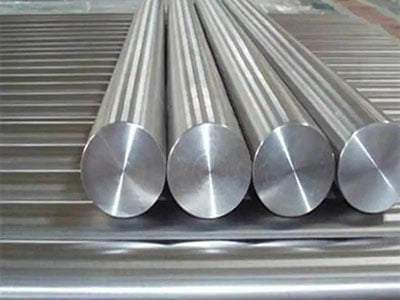Heat treatment is a critical process in enhancing the properties of various steel grades, and 4140 steel is no exception. Known for its versatility and strength, 4140 steel becomes even more beneficial when it undergoes proper heat treatment.
Enhanced Strength and Hardness

Improved Mechanical Properties
Heat treatment significantly improves the mechanical properties of 4140 steel. The process increases the steel’s tensile strength and hardness, making it suitable for applications that require high strength and durability.
Applications in High-Stress Environments
Due to the enhanced strength, heat-treated 4140 steel is often used in high-stress environments such as automotive components, industrial machinery, and heavy-duty tools.
Increased Toughness and Ductility
Balance of Toughness and Ductility
Heat treatment processes such as quenching and tempering provide a good balance of toughness and ductility in 4140 steel. This balance ensures that the steel can withstand impacts and bending forces without breaking.
Versatility in Various Applications
The increased toughness and ductility make 4140 steel ideal for a wide range of applications, from construction equipment to aircraft components.
Improved Wear Resistance

Enhanced Surface Hardness
Heat treatment enhances the wear resistance of 4140 steel by increasing its surface hardness. This property is particularly important for components that are subjected to friction and wear.
Longevity of Components
With improved wear resistance, heat-treated 4140 steel components have a longer lifespan, reducing the need for frequent replacements and maintenance.
Better Machinability
Ease of Machining
Heat treatment can improve the machinability of 4140 steel, making it easier to cut, shape, and finish. This is particularly beneficial in manufacturing processes where precision and efficiency are critical.
Reduced Tool Wear
Improved machinability also leads to reduced wear on machining tools, resulting in lower production costs and increased efficiency in manufacturing operations.
Enhanced Fatigue Resistance
Increased Lifespan under Cyclic Loads
Heat-treated 4140 steel exhibits enhanced fatigue resistance, meaning it can withstand cyclic loads and repeated stress better than untreated steel. This property is essential for components that experience continuous loading and unloading cycles.
Applications in High-Cycle Environments
The enhanced fatigue resistance makes heat-treated 4140 steel suitable for high-cycle environments such as automotive engines and industrial machinery.
Conclusion
4140 steel heat treatment offers numerous benefits, including enhanced strength, toughness, wear resistance, machinability, and fatigue resistance. These improvements make 4140 steel an ideal choice for various demanding applications across multiple industries. By understanding and utilizing the benefits of heat-treated 4140 steel, manufacturers and engineers can ensure the performance, durability, and efficiency of their products.
FAQ
What is 4140 steel commonly used for?
4140 steel is commonly used for manufacturing gears, shafts, axles, and other components that require high strength and toughness.
How does heat treatment improve 4140 steel?
Heat treatment improves 4140 steel by enhancing its mechanical properties, including strength, hardness, toughness, wear resistance, machinability, and fatigue resistance.
What are the common heat treatment processes for 4140 steel?
The common heat treatment processes for 4140 steel include quenching, tempering, annealing, and normalizing.
Can 4140 steel be welded after heat treatment?
Yes, 4140 steel can be welded after heat treatment, but it requires preheating and post-weld heat treatment to prevent cracking and ensure optimal performance.
Is 4140 steel suitable for high-temperature applications?
4140 steel can be used in high-temperature applications, but it is important to consider the specific operating conditions and consult with a materials engineer to ensure suitability.
